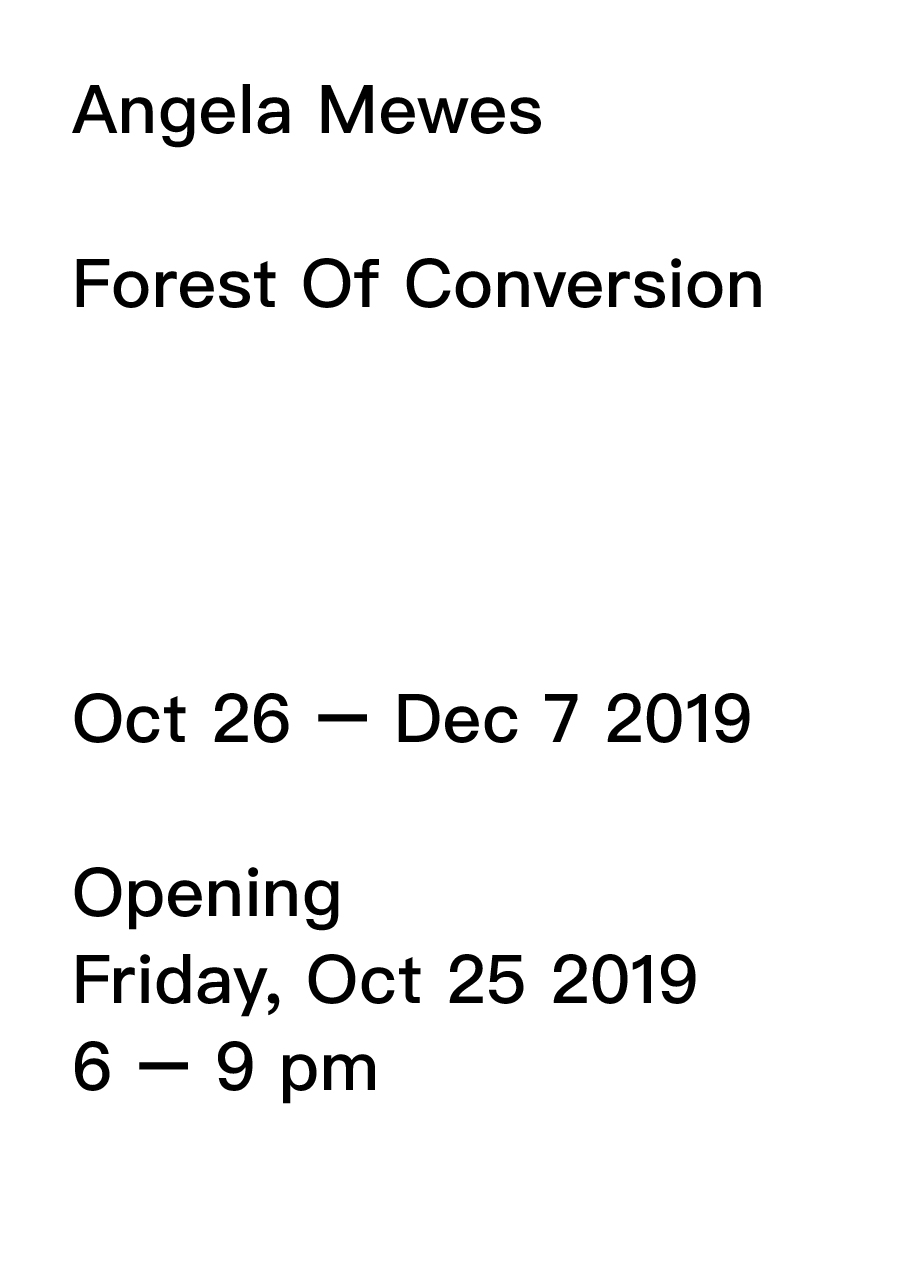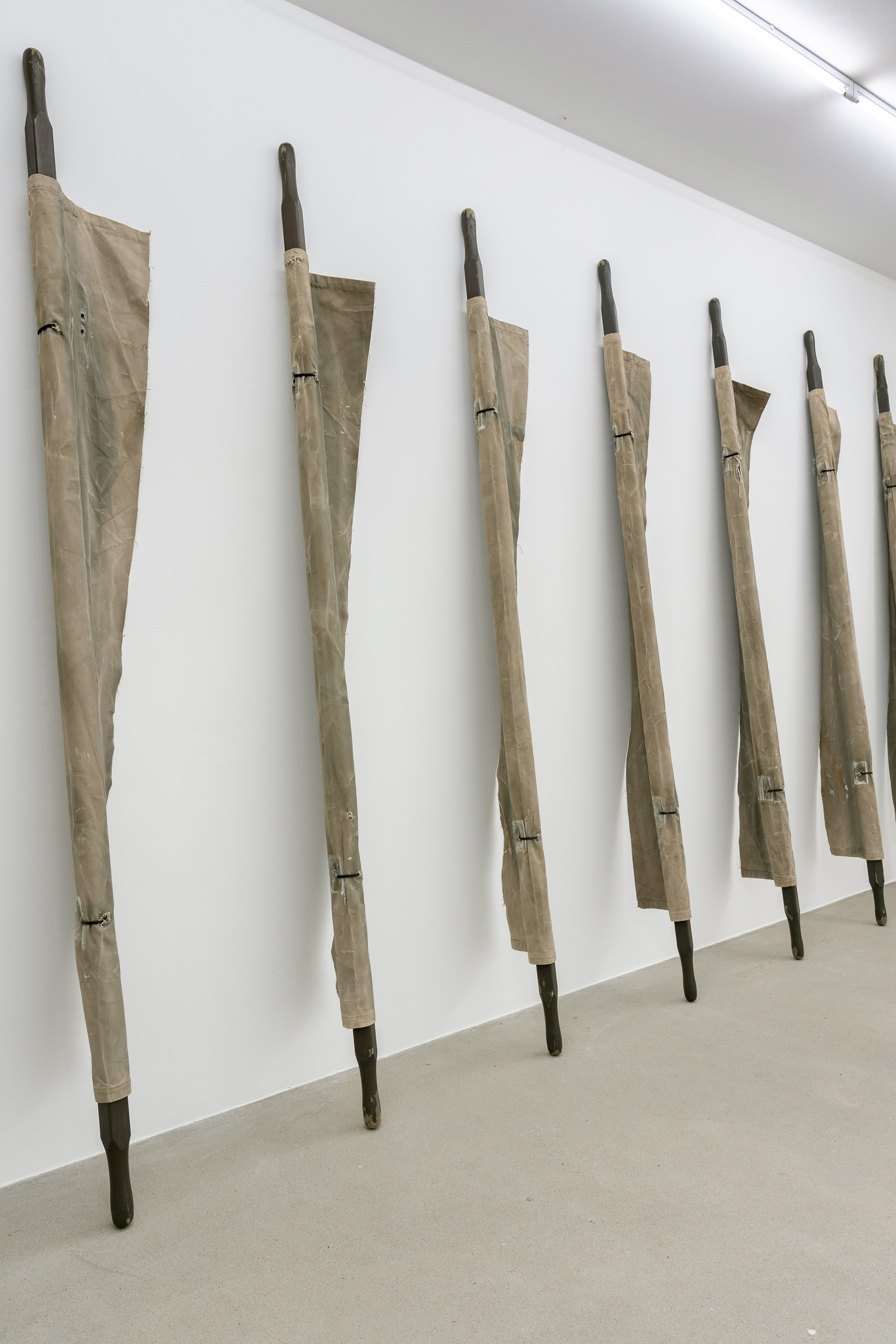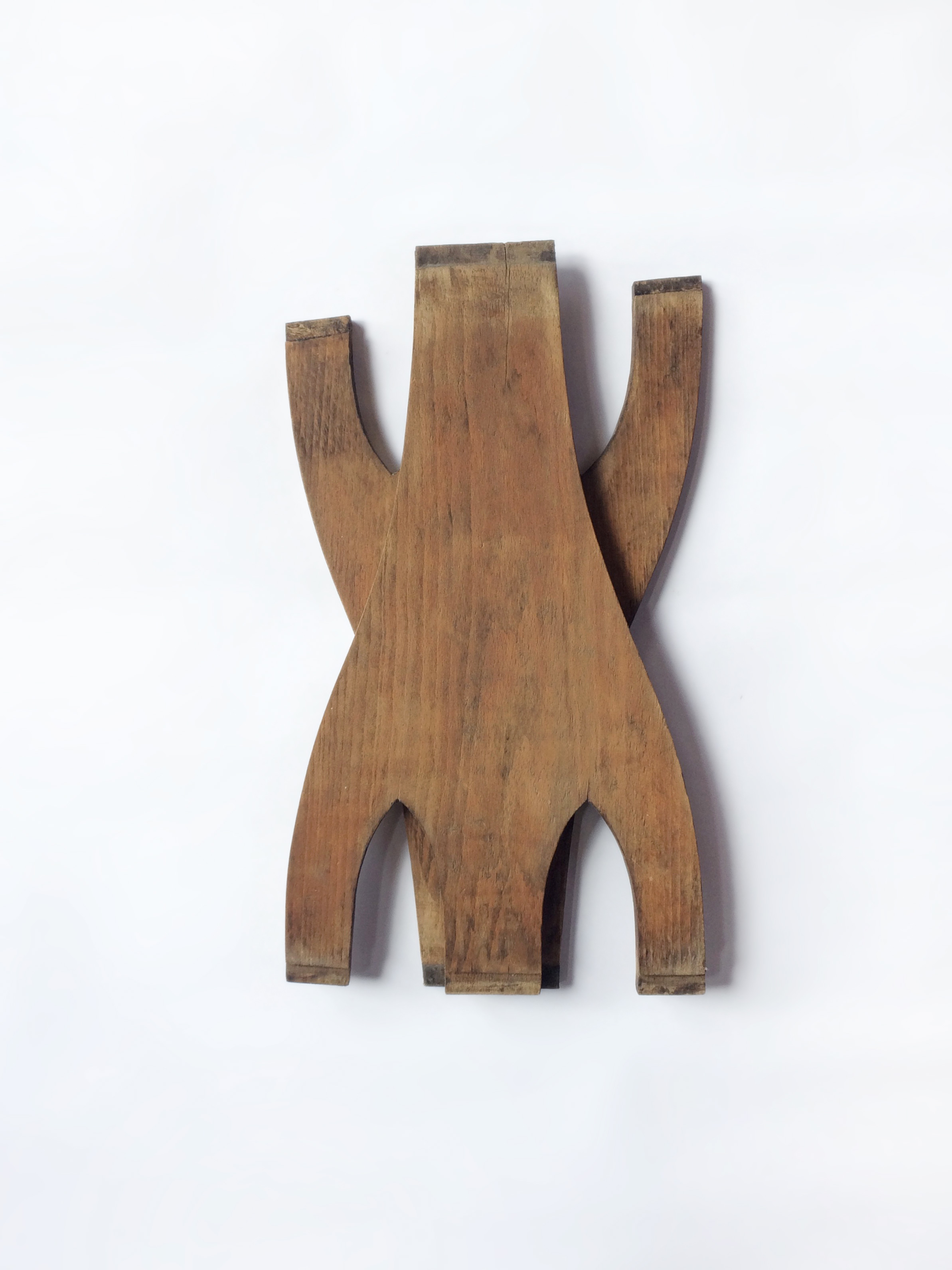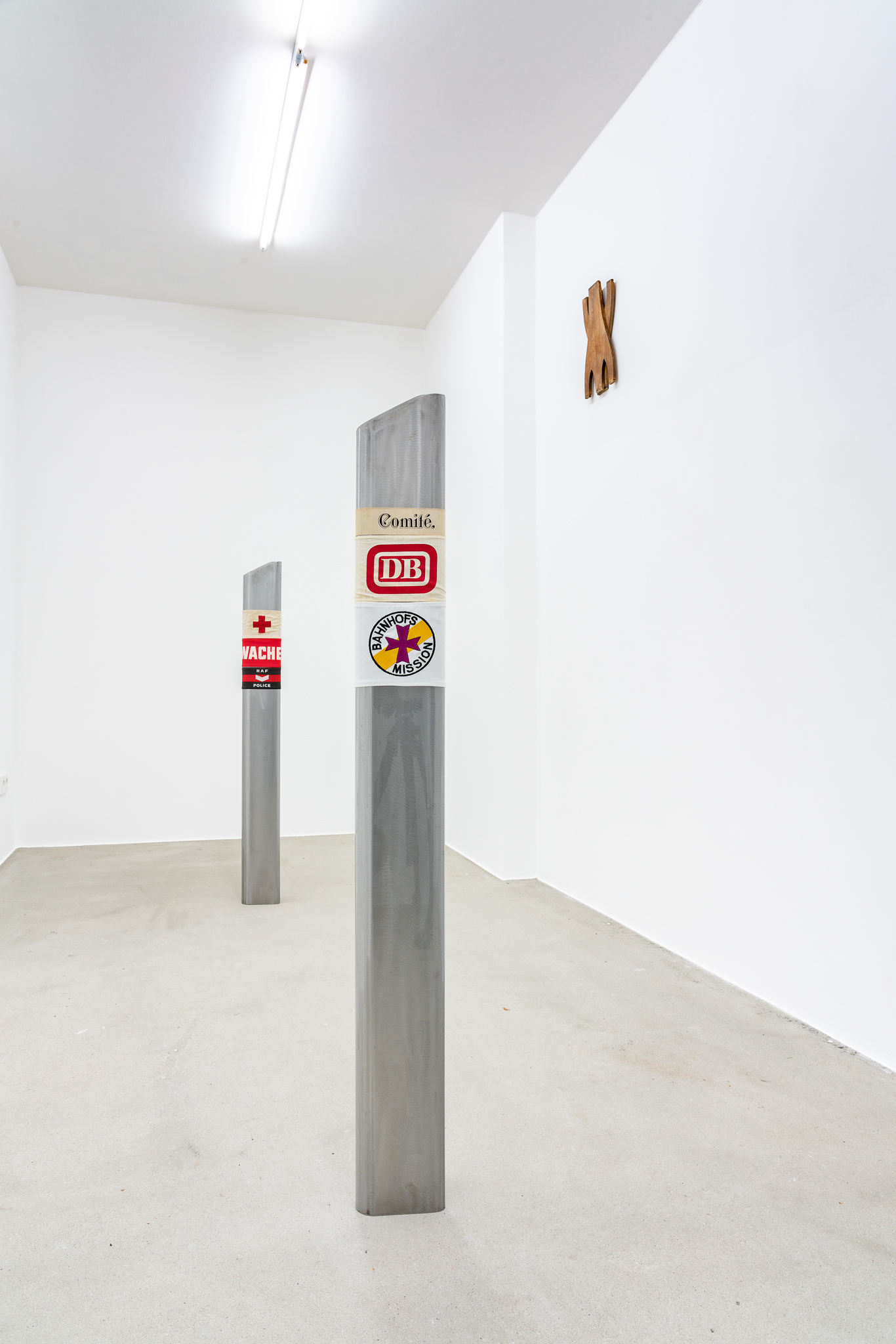




Forest Of Conversion
October 26 – December 7, 2019
Galerie Tobias Naehring
Blumenthalstraße 7
10783 Berlin
Angela Mewes’ installation Forest Of Conversion (2019) consists of historical stretchers of the Danish Civil Defense. The stretchers were used to transport the sick, injured or dead and were made around 1940. The folding substructure has now been removed and the jute fabric cut through in the middle. Forming a series, the eight poles lean at regular intervals parallel to each other on the wall. The fabrics touch the wall and turn away at the points where the distance to the wall allows it.
The material differs by the traces of use. On the wooden handles the varnish is scratched off, light and time are recorded on the fabric. After decades of unevenly rolled up storage, drawings by light were created on the once dark green fabric. The spatial extent of the light and distances determine the color gradients of these autonomous photograms, which make the very mean of the medium its object.
Conversion is the process of changing or causing something to change from one form to another. The many possible interpretations of the title Forest Of Conversion refer to the practice of understanding everything as conversion, questioning the relevance of things and their materiality. A forest is a piece of land where many trees stand. Many of our forests today are from the hands of women. It is estimated that in the early post-war years, 9 to 15 times more wood was felled than could regrow and the principle of sustainability was disregarded. Almost every forest district had its own tree nursery at that time. Here the women grew small trees and and planted them later in cultivated areas, and so our extensive spruce and pine forests developed. Forest conversion mainly affects homogenous forests, which are dominated by one tree species. The target of forest conversion is to preserve and enrich a forest which features a mix of several tree species and is therefore stable.
Angela Mewes, Berlin 2019

Law Of Attraction III
Wood, 33 x 21 cm, 2018

Delineator 620 (1/2), 2019
Stahl, Klarlack, Armbinden
120 x 13 x 10 cm

Delineator 620 (2/2), 2019
Stahl, Klarlack, Armbinden
120 x 13 x 10 cm

Photos: dotgain.info